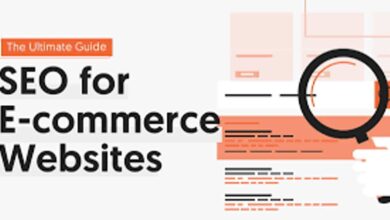Lately, I have received many inquiries from customers who wanted to have some website texts written for their newly created website and were then confronted with the question of what they wanted to achieve with their website text through my briefing form.
Was it to increase visibility, inform the customer, or get them to take any action? We were quickly able to clarify together what goals they are pursuing and what exactly they need to achieve them. As a rule, you always need a search-engine-optimized text, an SEO text, to implement your goals.
But what distinguishes an SEO text from a “normal” website text?
The difference is this: When writing a website text, you only make sure that all-important information is included, that the customer, patient, or prospect is informed, that an action is requested, and that the text reads well, an SEO text goes a long way further.
Website texts are usually written for the reader only. An SEO text, if it is well written, is written for the reader, but it fulfills a second, more important purpose if you want to permanently increase your visibility on the web – the value for the search engines, e.g. for Google.
Here it is briefly noted that not only Google is a search engine, but also YouTube, Amazon, Pinterest, and Bing are search engines for which the same principles apply to Google. For the sake of simplicity, I’ll be talking about Google in the next few lines, since that’s the search engine that I use primarily and is the most familiar search engine to most people.
How do search engines work?
What many do not know is that Google is not just a search engine, but Google is particularly concerned with offering its user, the searcher, the best possible result for his query. So it matches the user’s question with the content of a website.
SEO texts and SEO measures (SEO is not just texts) are based on the requirements and functionality of search engines. That is why they are called search engine-optimized texts.
You should know that nearly 100 percent of all web entry is through a search engine – browser open, search engine on, type question and search results…
But how do Google and the other search engines manage to give us the right answer to our query?
Very easily. Google has an algorithm that includes the whole internet. The content is so extensive that Google uses an index that works like a kind of folder on our desktop.
In this index, all content from the World Wide Web is compiled into structured and simplified information. This index, i.e. the folder with all this information, is stored on a server. In this case on the Google server.
To find out what content you offer, search engines have small robots. They’re called crawlers. They are like little animals moving through a website.
Like vacuum cleaners, they suck up all the information that the website contains and pass it on to the index. For a crawler to find its way around a website, it uses links on the website to get from one website to the next.
So if you enter a search term or a keyword, all the information is retrieved from the index and given to the person searching. The Google algorithm then has to decide how important each page’s content is to return results accordingly.
Many different criteria are used for this, which are used to determine the ranking (ranking: the position on Google where your content is displayed). You will then receive a list of all search results. You will find the most important, most relevant results on the first page of the search engine. The results are sorted by relevance.
To be found on Google, your website must be found with your SEO text on the first page!
Most people, around 99.1 percent, never get past the first page when they search. Few get lost on page two, hardly anyone looks at page three. So that you can now be found with your website texts, you have to be in one of the first places, because almost 60 percent of the organic clicks get the first place. The second organic result still receives around 16 percent.
How do you show the search engine with SEO text that you have the right content for a question?
keywords! If you have now written a website text with a word that you and others use but not the majority of searchers, you may have wasted a lot of potential here.
So what you need for an SEO text is the optimal keyword (the word that most searchers enter into a search engine). Various tools are used to find out. It is important to be able to put yourself in the situation of the searcher to make the right choice of words. In addition, the search volume and the difficulty of each keyword must be taken into account.
While a general search term such as “copywriter” can have a very high number of search results and the level of difficulty is very high, it may be helpful to name the respective city, e.g. “copywriter Recklinghausen” or “copywriter Marl”.
It doesn’t make sense to use a highly competitive, very broad keyword when your website is just starting and the competition is fierce. It helps to find a niche. But now back to the actual question of why SEO is so important for a website.
My customers call me or write to me because they have a website or an online shop but are not found or because they are found but the customers leave after a short stay.
If you want to be found on the Internet, you need search-engine-optimized texts that are aimed precisely at the reader’s queries and offer them the content that the readers expect. No false promises or hopes. The reader must find what he was looking for on the page. If he doesn’t find that, then we have the reason for problem number two.
See Also: 30+ YouTube SEO Tools to Boost Your Video Rankings in 2024
Writing SEO texts – this is how it works
To be found, the first step is to find the right keyword, which you repeatedly mention in the body of the text if it fits. It is not advisable to overload the text with the keyword, this can quickly backfire and can even be penalized by Google.
Crafting effective SEO texts is simplified with the right tools. Utilize an SEO extension to seamlessly implement keyword strategies, optimize content, and enhance your website’s search engine rankings.
Google wants authentic, real texts with added value that were not copied but only written for this website to offer the searcher the best possible benefit, namely to answer their questions.
So after we have found the right keyword and included it in a reasonable amount (optimal keyword density) in the website text, the website text should also be formatted in a search-engine-optimized way.
That means the keyword should
- in the URL
- and the title tag,
- of the H1 heading, ideally at the beginning,
- subheadings should be used in the form of H2 headings and H3 headings that also contain the keyword
- and you should write a keyword-optimized meta description.
If possible, use enumerations in the form of e.g. B. Bullet points and the text should be easy to understand.
Don’t know how to find the right keyword? Here you will find many great tools to help you find the right keyword.
The SEO text should contain the questions that searchers enter into the search engine in connection with the keyword, as long as it fits into your website text. If the questions in your website text are answered and you have better content than your competition on your website, you will soon be found with your content. In addition to Google auto-complete, I like to use answerthepublic.com to find out what prospects are looking for.
Here’s how I find my clients’ SEO text weaknesses:
To find out the status quo where my customer is currently with his content, I work with analysis tools that show me which keyword my customer is using wherein the search engine. I look at what he needs or should improve to get higher visibility. To do this, I create individual search-engine-optimized texts or I develop a complete concept and optimize my customer’s entire website.
What I also don’t ignore is looking at the content of the direct competitors and seeing where they still have unanswered questions or have not used potential. I then use this potential for my customers and answer questions that the competition has left unanswered.
I also look at competitor reviews to see what their customers have said about them. Their reviews say a lot about what they found important, what they liked, and what they didn’t. This information optimally rounds off a search-engine-optimized website text and gives the SEO text everything it needs to attract prospects, keep them, and turn them into customers.
Read Also: Top Best Tools to Check Your Website Keyword Position
Crunchy metadata is important for a well-functioning SEO text
A good SEO text always comes with crisp metadata around the corner. These are the first things a searcher sees in the results after hitting enter and starting their search.
The metadata consists of a short headline and a crisp, informative little piece of text that encourages clicks and provides a brief synopsis of what the customer can expect after the click. It is important to stick to the truth here. If customers don’t find what they were promised, they leave faster than they came.
If you also need a search engine-optimized website text, I am happy to help you. Feel free to send me an email or use my contact form.
For more information about crisp SEO texts that are found on the internet and generate customers, you are welcome to inform yourself about my services.
I would be happy to hear from you.








